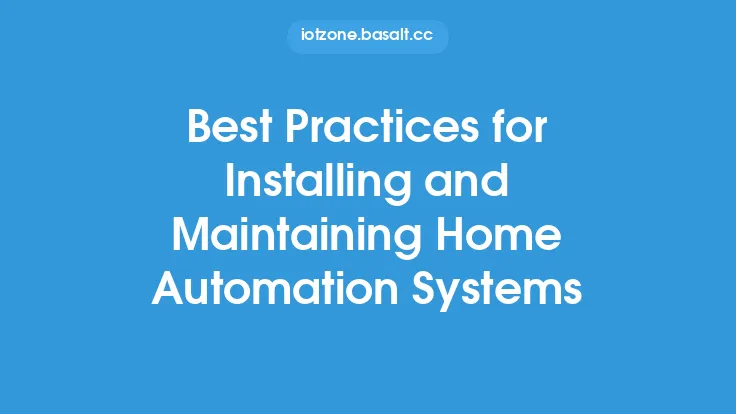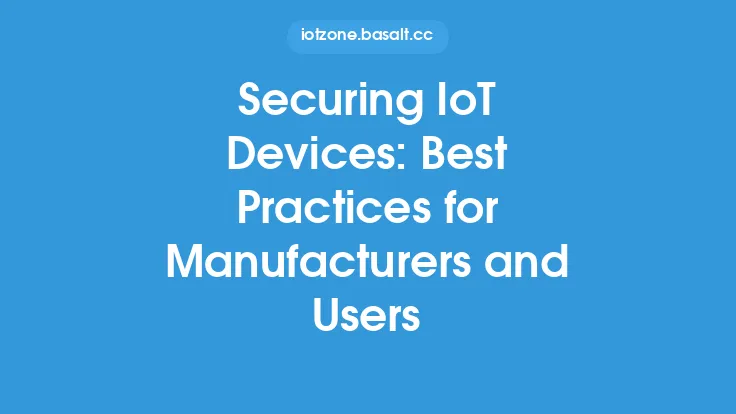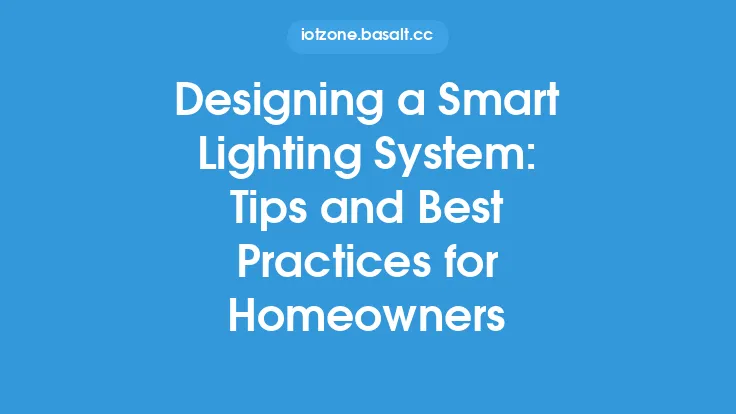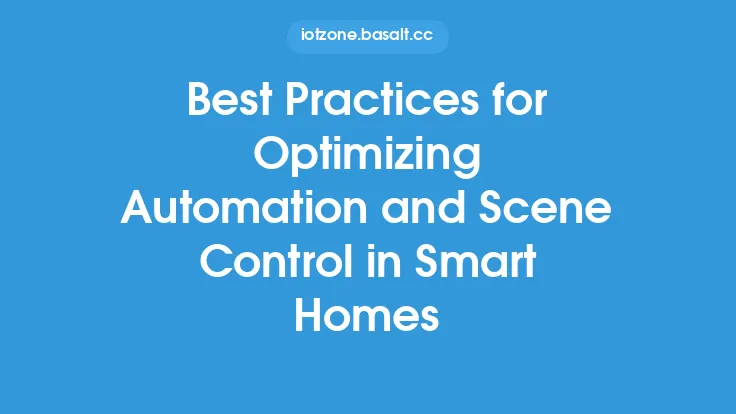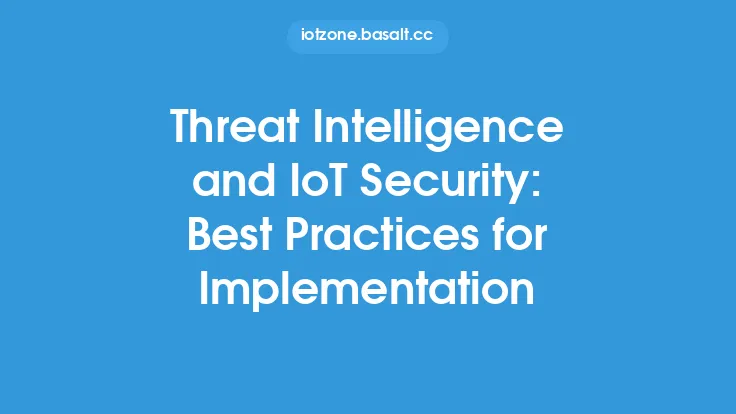When it comes to installing and maintaining home security systems, there are several best practices that homeowners should follow to ensure their system is effective and reliable. A well-designed and properly installed home security system can provide peace of mind and help protect against potential threats, such as burglary, vandalism, and other forms of property damage. In this article, we will explore the key considerations and best practices for installing and maintaining home security systems, including the importance of system design, equipment selection, installation, and ongoing maintenance.
System Design and Planning
Before installing a home security system, it's essential to design and plan the system carefully. This involves assessing the specific security needs of the home, including the number of doors and windows, the layout of the property, and the types of assets that need to be protected. Homeowners should also consider the level of security they require, including the type of sensors and detectors needed, as well as the monitoring and response options. A well-designed system should include a combination of perimeter protection, interior protection, and surveillance, as well as a reliable communication system to alert authorities in the event of an incident.
Equipment Selection
The type and quality of equipment used in a home security system can significantly impact its effectiveness. Homeowners should select equipment that is reliable, durable, and suitable for their specific needs. This includes door and window sensors, motion detectors, glass break sensors, and surveillance cameras. When selecting equipment, consider factors such as sensitivity, range, and power requirements, as well as any specific features or functionalities required, such as night vision or weather resistance. It's also essential to ensure that all equipment is compatible with the system's control panel and monitoring station.
Installation and Configuration
Proper installation and configuration of a home security system are critical to its effectiveness. Homeowners should ensure that all equipment is installed correctly, including sensors, detectors, and cameras, and that the system is configured to meet their specific needs. This includes setting up the control panel, programming the system, and testing all equipment to ensure it is functioning correctly. It's also essential to ensure that the system is integrated with any existing smart home devices or systems, such as lighting or thermostat controls.
Ongoing Maintenance and Testing
Regular maintenance and testing are essential to ensure that a home security system continues to function effectively over time. Homeowners should perform regular system checks, including testing all sensors and detectors, checking for software updates, and ensuring that all equipment is clean and free from debris. It's also essential to replace batteries and perform other routine maintenance tasks, such as cleaning cameras and sensors, to ensure the system continues to function optimally. Additionally, homeowners should consider scheduling regular system inspections and maintenance with a professional security company to ensure the system remains up-to-date and effective.
Power and Backup Systems
A reliable power supply is essential for a home security system to function effectively. Homeowners should ensure that the system has a stable power source, including a backup power system, such as a battery or generator, in case of a power outage. The backup system should be designed to provide sufficient power to the system for an extended period, typically several hours or days, depending on the specific requirements of the system. It's also essential to ensure that the backup system is properly installed, maintained, and tested to ensure it functions correctly in the event of a power outage.
Monitoring and Response
A home security system is only effective if it can alert authorities in the event of an incident. Homeowners should consider monitoring options, including self-monitoring, central station monitoring, or a combination of both. Self-monitoring involves receiving alerts and notifications directly, while central station monitoring involves a professional monitoring station that can dispatch authorities in the event of an incident. It's essential to ensure that the monitoring system is reliable, secure, and compliant with relevant regulations and standards.
Troubleshooting and Repair
Despite regular maintenance and testing, issues can still arise with a home security system. Homeowners should be aware of common issues, such as false alarms, equipment failures, or communication problems, and know how to troubleshoot and repair them. This includes checking system logs, testing equipment, and contacting the manufacturer or a professional security company for assistance. It's also essential to keep spare parts and equipment on hand, such as batteries and replacement sensors, to minimize downtime and ensure the system remains functional.
Upgrades and Integration
As technology advances, home security systems can become outdated or less effective. Homeowners should consider upgrading their system regularly to take advantage of new features, functionalities, and technologies. This includes integrating the system with other smart home devices or systems, such as lighting or thermostat controls, to create a more comprehensive and automated security solution. It's also essential to ensure that any upgrades or integrations are compatible with the existing system and do not compromise its effectiveness or security.
Security and Cybersecurity
A home security system can be vulnerable to cyber threats, such as hacking or data breaches, if not properly secured. Homeowners should ensure that their system is secure, including using strong passwords, encrypting data, and keeping software up-to-date. It's also essential to consider the security of any connected devices or systems, such as cameras or door locks, and ensure they are properly secured and monitored. Additionally, homeowners should be aware of potential security risks, such as social engineering or phishing attacks, and take steps to mitigate them.
Conclusion
Installing and maintaining a home security system requires careful planning, design, and execution. By following best practices, including system design, equipment selection, installation, and ongoing maintenance, homeowners can ensure their system is effective and reliable. Regular testing, troubleshooting, and repair, as well as upgrades and integration, can also help ensure the system remains up-to-date and functional. By prioritizing security and cybersecurity, homeowners can protect their property and loved ones, and enjoy peace of mind knowing their home is secure and protected.
